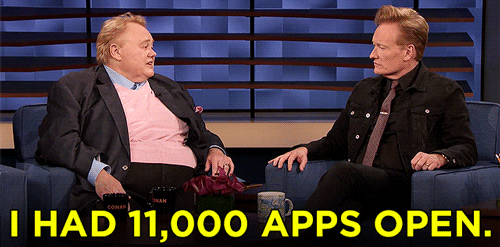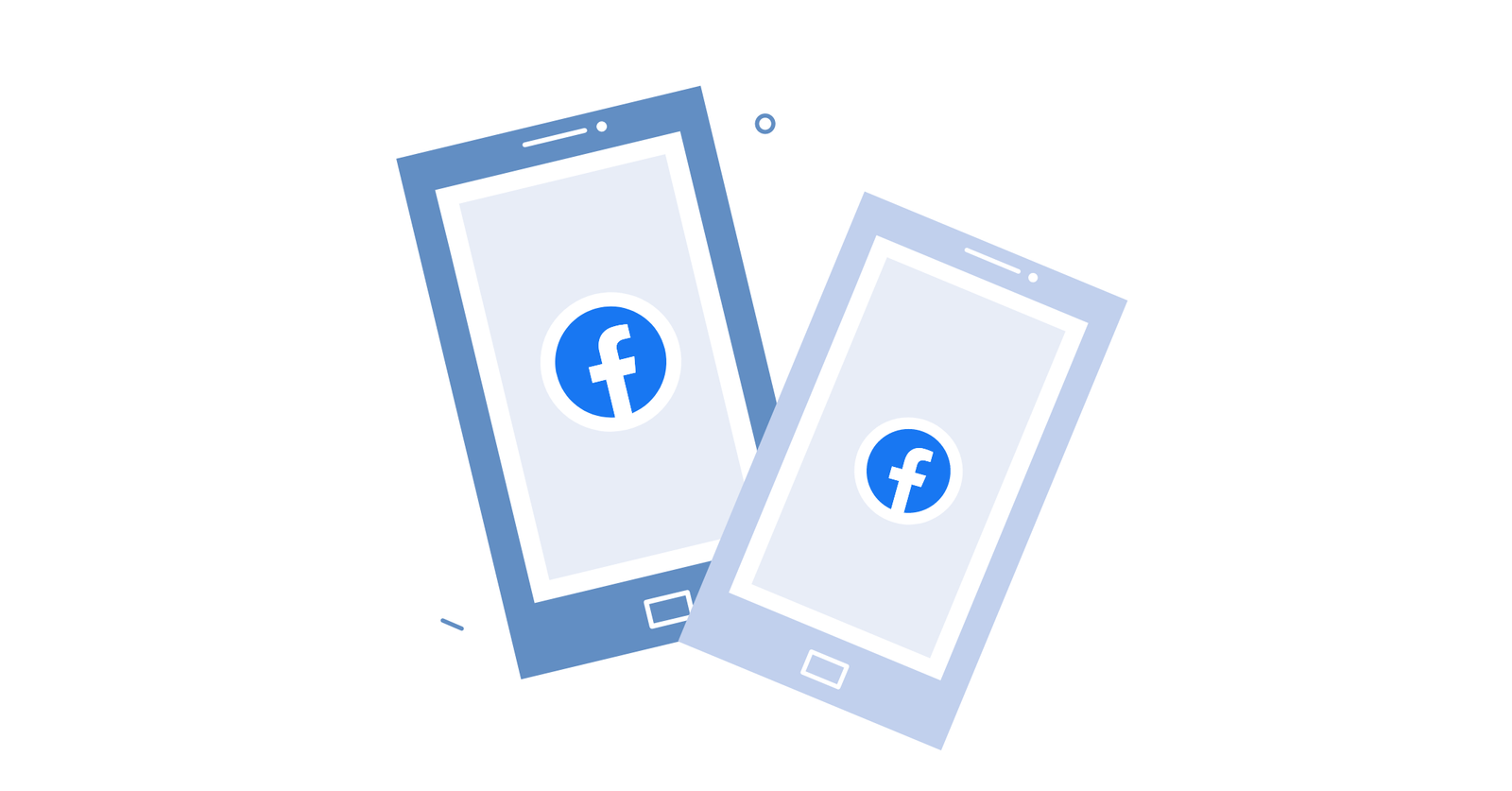A seamless mobile app is nothing without users. As one of the top sources for mobile app installs, Facebook Ads should be your go-to tool for boosting engagement. Read on to find out how to create great Facebook Ads for apps.
In this guide, we’ll cover everything you need to know to set up a successful Facebook Ad campaign for your mobile app, as well as a few tips and tricks to maximize your ad’s impact.

All you need to get started are a Facebook Business page and a Facebook Ads Manager account. If you are new to using Ads Manager then take a look at our starter’s guide before you begin. And, as always the team at K6 is happy to help if you have any questions!
Why should you use Facebook Ads for your mobile app?
If the possibility of reaching 2.7 billion people a month wasn’t enough to persuade you, then how about this? In the US, 1 out of every 5 minutes spent on a device is spent on Facebook and/or Instagram. A whole audience of potential customers is sitting scrolling right now. Do you really want to miss out on that exposure?
With Facebook Ads it’s easy to control your budget, making it a cost-effective way to promote your mobile app. It’s also really simple to set up, as you’re about to find out…
How to set up a Facebook Ad for Mobile Apps
1. Register the App
First up you need to register your mobile app with Facebook for Developers. If you’re not the app developer, then share this link with them so they can help you set up everything in the App Dashboard. It covers how to register an app, install IOS and Android Software Development Kits and add app events, such as installs and in-app purchases.
While installing the Software Development Kit is entirely optional, at K6 we always recommend it. SDKs provide higher levels of tracking and ad targeting, giving you more insights into your audience, enabling you to optimize more effectively.
To make sure you’re registered correctly and ready to move on to step two, enter your Facebook Ad ID into Facebook’s App Ads Helper tool.
2. Set up Mobile Ad Campaign Objectives
When running ad campaigns of any kind it’s always good to have clear objectives in mind. What exactly are you looking to gain from this?
For a mobile app ad campaign, there are two main objectives you’ll want to focus on: App installs and Conversions.

App Installs
If your goal is to drive mobile app downloads then select the “App Installs” campaign objective. The ad campaign will optimize towards this goal, showing your ad to people in your target audience who are most likely to take action.
(We’ll be setting up a target audience in the next step)
Conversions
However, if you’re looking to re-engage users who have already downloaded the app, then the “Conversions” campaign objective may be more appropriate.
Make sure to select the conversion event location (your app) at the ad set level. To do this, select your app, the app store it resides in for this campaign and ad set and then choose the app event you want to optimize for, such as in-app purchases.
3. Target Your Audience
Facebook may have over 2.7 billion active users a month, but you don’t want your ad to appear in front of all of them! The budget you’d need for that campaign would be astronomical. Not to mention the lack of relevance for many users would offer a very poor return on investment.
When it comes to marketing, knowing your target audience is important. If your mobile app is already out there, then reviewing existing audience data is a great place to start. For newbies, think about who is most likely to install and use your app – they’re your target audience.
Facebook Ads offer many different audience targeting options depending on your business goals and campaign budget. We’ll cover the big three below but remember, the option you choose isn’t set in stone. It’s good practice to monitor and review your settings as the campaign progresses to ensure you’re always reaching the right people.
Head over to the ad set level to select your audience targeting and try one of the following options…
Broad Targeting
This option is ideal if you are just starting out, not sure who to reach and have some budget set aside to figure it out. Selecting age, gender and location allow you to analyse the performance from different demographics and scale back on any underperforming ones.
Detailed Targeting
A useful option for those just starting out with a smaller budget. Detailed targeting allows you to focus on a narrower audience who are more likely to be interested in your mobile app. This option is particularly useful if your app operates in a niche market.

Under Detailed Targeting, start typing some keywords relevant to your app and target audience. If you’re not sure what keywords to use, try interests that your users are likely to have. For example, if your app helps users find new book recommendations, target people with an interest in reading, book reviews and so on.
Detailed targeting also allows you to target users interested in a competitor, and take advantage of their audience data.
Lookalike Custom Audiences
If you have an existing audience, Lookalike Custom Audiences are an extremely effective way of finding new, relevant users to target. Taking data from custom audiences you have created, Facebook generates an audience who share similar interests and behaviours to your existing customers.
Custom audiences can be created from a variety of user data, including email lists, website pixels (website visitors) and app events. To create your custom audience go to the Audience tab in Facebook Ads Manager and select “Create Audience”.
Any custom audience of over 100 members can be used to generate a Lookalike. Select the “Create New” dropdown menu and select your source, location and size (between 1% and 10%).

We recommend always starting out at 1%. It’s most similar to your existing audience and therefore offers a higher chance of success. However, if in the future you’re looking to broaden your audience, expand the % reach and monitor the success rate.
4. Create the Facebook Ad for Your Mobile App
Now the campaign and ad set levels are set up, it’s on to the fun part, creating your ad. (Although at K6 we think the technical part is pretty fun too!)
Your ad will be uniquely tailored to your company and audience. However, there are a few things that should be included every time…
5 Key Elements for a Successful Facebook Ad for Mobile Apps
- Headline – Compelling ad copy is only useful if you can get people to stop and read it. To achieve this, the ad’s headline should be larger and bolder than your text to grab attention. For new audiences, summarise the app and always include your name. For retargeting, a promotion, information on new features or solutions the app offers can be a good place to start.
- Text – Ad copy should be interesting and relevant to the target audience, whilst reinforcing the campaign’s goal. For mobile apps, it’s useful to talk about the features and benefits it offers. New user promotions can also encourage installs. There is no set length for ad copy, but in many cases shorter works better. Run an A/B test with long and short copy to see what resonates with your audience.
- Creative – To be effective, your Facebook Ad needs to stand out. A video’s subtle motion effectively stops scrolling and is often preferred for Facebook Ads as a fast way to visually connect users to a brand. Images can work too, so test out carousel ads and single images to see which works for your audience. Either way, make them relevant to your ad copy and bright enough to stand out against the white feed background.
- Deep Link – Ads for mobile apps have the option of adding deep links in addition to the other standard features. Deep links make downloading the app easier, increasing conversion rates and reducing bounce rates (the digital marketer’s dream ?). They send users directly to your app or to specific locations within your app, creating a more seamless user experience. If you’re new to deep links, you can learn more about how to add them here.
- Call to Action Button – One of the easiest ways to get results from your Facebook Ad is the Call to Action Button. Guide users to complete on your goal by adding a relevant CTA button to your ad. For mobile apps “download”, “sign up” or “learn more” are great, but there are several options to choose from.
5. Launch It
It’s time to roll out your completed Facebook Ad and see how it performs. The one thing to remember with an ad campaign is that it’s never finished. Check back regularly and run reports on performance data to see what isn’t working and optimize accordingly. Good luck!
Key Takeaways
Facebook Ads are one of the top sources for mobile app installs, generating an impressive 13.08% conversion. As you’ve seen, it’s not difficult to take advantage of this marketing opportunity. Here are the key things to remember when creating your next Facebook Ad for a mobile app.
- Know your audience – targeting the wrong people costs money, so know your audience or run tests to find them.
- Don’t set and forget it – keep monitoring the performance data Facebook is collecting on your ad and optimize it regularly.
- Show off – prove to your audience why they can’t live without your app and you’ll see your downloads skyrocket
Bonus Tips For a Successful Facebook Ad Campaign for Mobile Apps
- If your goal is to increase app installs then audience segmentation is key. Sending users to the wrong app store could be disastrous for your conversions rate. There’s a simple fix to get it right first time though. Under detailed targeting, select “Behaviors”, “Digital Activities” and then “all mobile devices by brand”.
- An obvious one, but make sure mobile-first placements are selected when choosing where to place your ad. I’m sure you don’t need me to tell you why this is a good idea for advertising a mobile app…
- Finally, if you’re working with video then show the app in use. A “real-life” scenario makes it easier for the audience to visualize how and when they might use it too. Make sure to demonstrate the interface, don’t leave it up to their imagination.
If you do not have an app yet, here is a quick guide for you. Think about the features that will provide you with a competitive advantage in the marketplace and the targeted audience. Another significant aspect to consider is the app platform. If your goal is to target Android users, you can hire React Native development companies or Java ones. For iOS, you should hire Objective-C and Swift programmers. As soon as you are settled and the app is ready for advertisement, move on to one of the greatest ad platforms – Facebook.

